Bluetooth Speakers - Home
July 2020
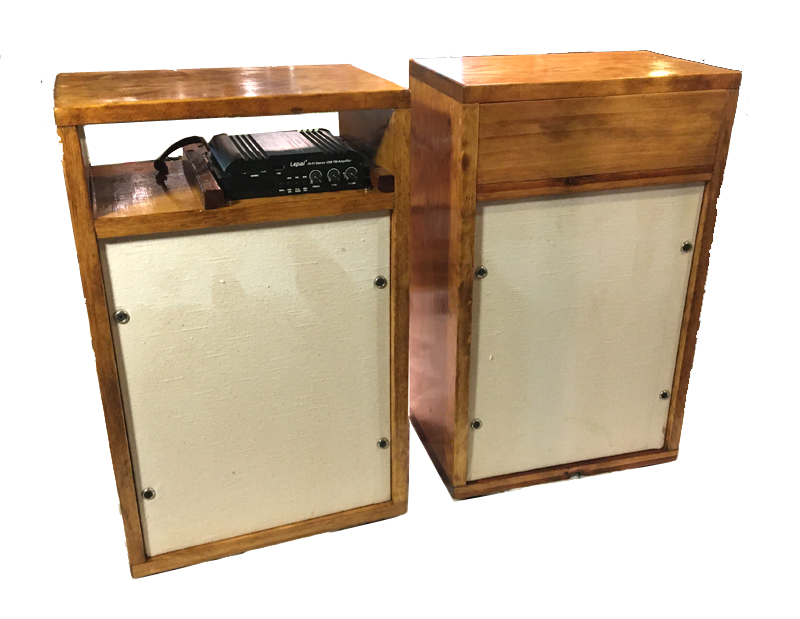
Finished Bluetooth Powered Speakers
In the summer, we like to sit out on our deck for dinner and just to get some fresh air and cool down. For some time we have wanted to mount some outside speakers so we could have music out there. We decided that running wires out to the deck from the inside stereo would be too much work, plus we would have to go inside to adjust the volume or pick a different source. A set of Bluetooth speakers seemed to be the way to go. Small 20 watt / channel amplifiers with Bluetooth and USB capabilities had become pretty cheap, so we went for it. We ended up getting a Pyle amp that had an FM radio, USB and Flash Drive inputs, a 1/8" line input, and Bluetooth built in.
We got some 8" woofers from Parts Express. We had already gotten a 4" full range speaker from them by mistake (sent instead of something else we had ordered), and they didn't want it back, so we ordered another one to use as Mid Range / Tweeters (more on this later), and built cabinets based on these drivers.
The cab design is based on recommended volumes for these two drivers, and since the 4" driver is a regular speaker, it needed to be isolated from the woofer. We also wanted to be able to mount the amplifier in one of the units, and make the whole thing fairly easy to move and setup (since it can't live outside all the time).
Here is what we ended up with. These would be a basic box, with a space above the cab for the amplifier in one of them, and a cubby for storing the power brick and speaker wire in the other one. All of the wood was leftovers scavenged from stuff we had in the shop from previous projects.
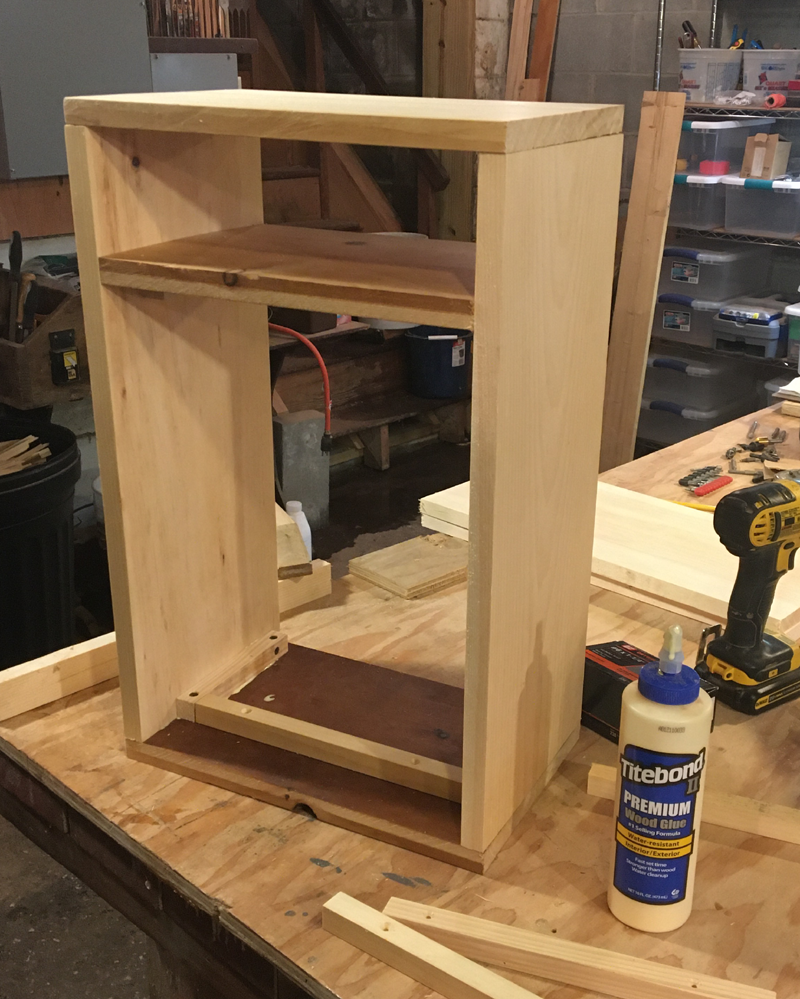
Start Of One Of The Cabinets

Baffel Boards Painted And In Place
We built some small boxes to isolate the 'Tweeter' from the Woofer.
(See Update at the bottom of this page).

Isolation Boxes for Tweeters
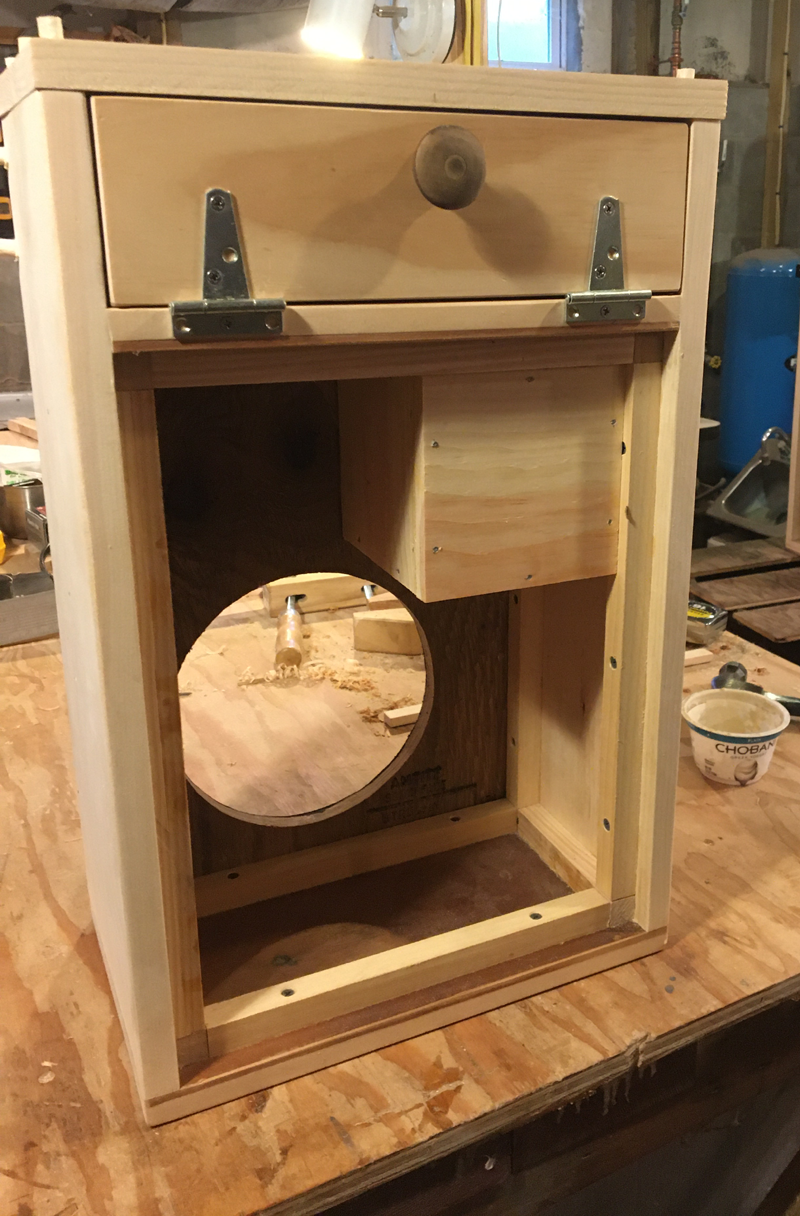
Isolation Box In Place, As Well As The Cubby Door
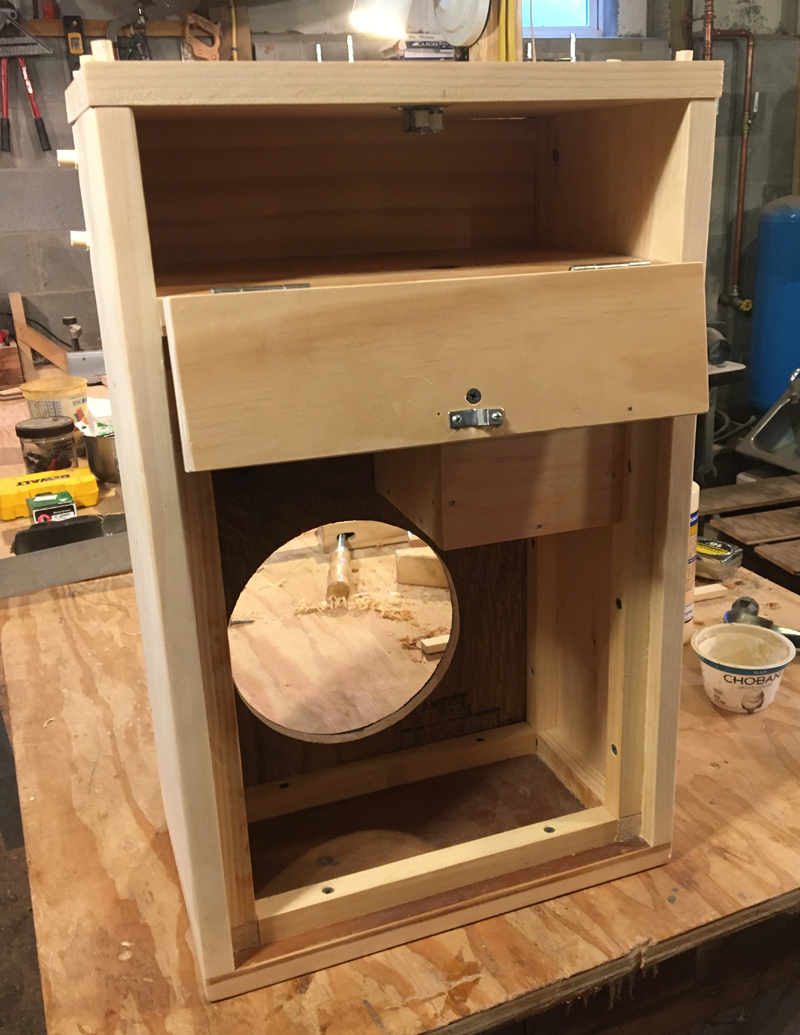
The Cubby Door In Open Position
Here you can see the rails which will hold the amplifier in place in the upper compartment of the other cabinet. The amplifier has flanges on each side, and the rails have slots at the bottom. This allows us to easily remove the amplifier if necessary. You can also see the front panel of the cubby.

Rails For Amplifier In Cab On Right
The backs of the cabinets are 3/8" plywood with a hole to mount a speaker wire jack. The unit with the amplifier has an output jack for the other speaker, and the jack on the other speaker is (of course) the input jack.
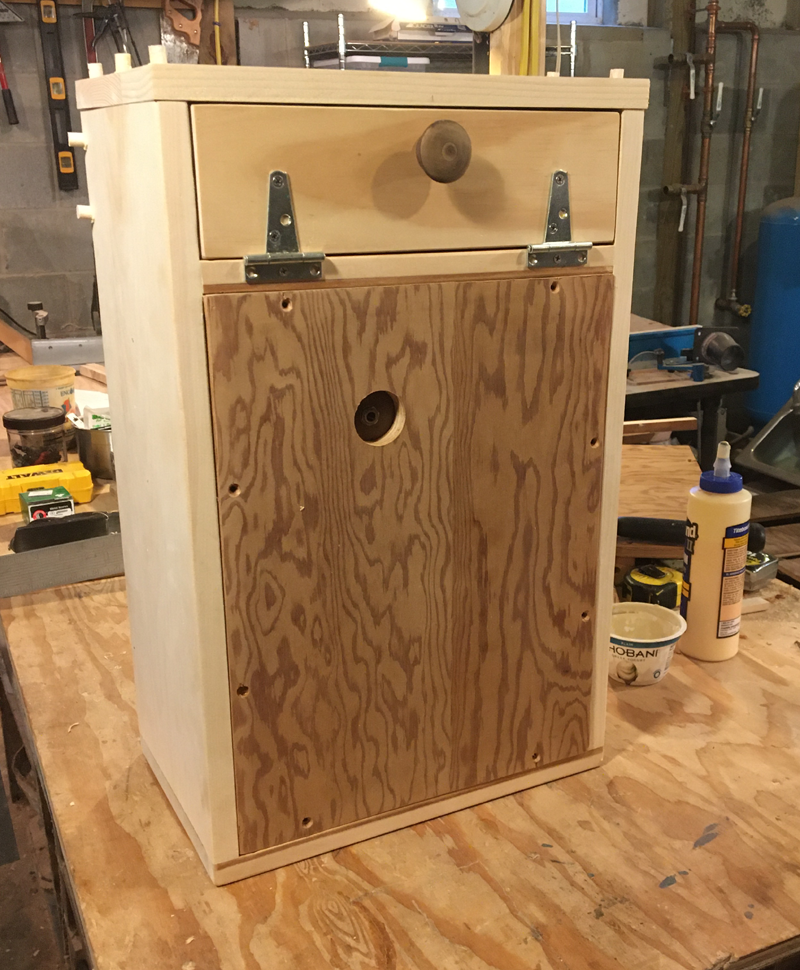
Back Of Cab In Place, With Hole For Jack
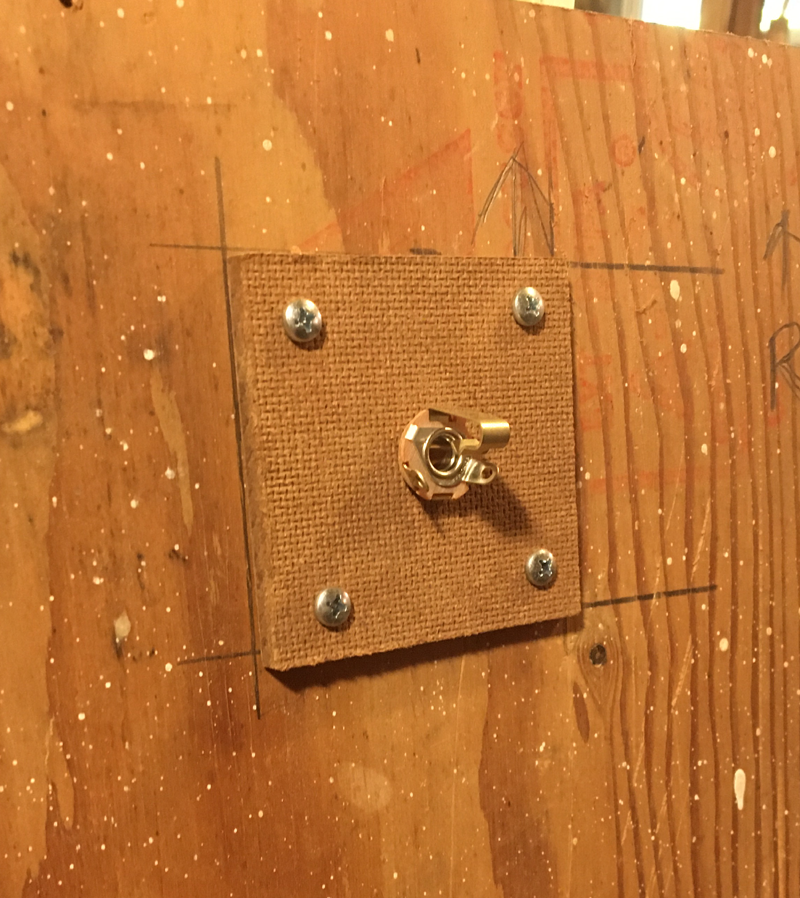
Jack Mounting Plate On Inside Of Cab Back
Once the cabinets were built, we gave them a coat of Puritan Pine stain, then 3 coats of glossy Urethane. Once they were dry, we mounted and wired up the speakers and crossovers. The Grill frame is a simple frame made of 3/4" by 3/4" pine, and covered with some fabric from an old curtain.
This rig works well. We can stream music via Bluetooth from our phone or a laptop, or we can play MP3s from a USB thumb drive or Flashcard. We can also connect anything with a headphone output jack to it if desired. The FM radio works, but doesn't get much more than the local radio station around here. We store the power brick and speaker wire in the cubby, so it is easy to carry the two cabs out to the deck when we want to. The only issue so far is that we think the sound is lacking a bit in the high end (the 4" full range speakers don't seem to quite supply enough top end), so we may end up trying to add a couple of small actual tweeters to the cabs.
UPDATE: The 'Tweeters' mentioned above were really mid range speakers, and we decided that the sound was missing some high end, so we ordered some small tweeters from Express Parts. These have sealed backs, so we didn't need to isolate them from the woofer. We used a 2-7/8" hole saw drill bit, and were able to mount them next to the small midrange speakers. We originally wanted to remove the mid range speakers, along with their isolation box, but we had glued the box in, so we just left them in and disconnected them from the 2-way crossover. It definitely helped the high end a bit.
